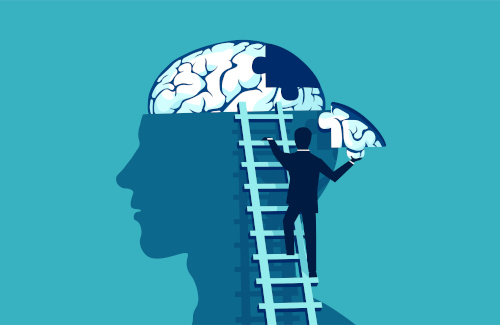According to the CDC, 9.4 percent of children have ADHD. Teachers are often familiar with the associated behaviors of ADHD. Each child’s presentation of ADHD is unique. Some of the most common symptoms of ADHD include difficulty sustaining attention, completing assigned tasks at school (often including homework), physical restlessness, strain in social relationships and appearing off task due to daydreaming.
With nearly one in 10 kids struggling with some form of ADHD, it can put a strain on teachers in the classroom. For teachers and school systems, often the best way to manage ADHD in the classroom is to form a partnership with parents to develop a consistent strategy that can help children manage their ADHD behaviors. Consistency of care between a child’s home life and their school activities can provide the best support and least amount of disruption for the child as they transition between school and home.
It is important to remember that the child’s brain is rapidly developing. Often they are not cognitively or emotionally developed enough to change their own behaviors. They need care and support from their parents and school systems. In many cases, teachers are aware of effective strategies for supporting children with ADHD, while parents are in new, uncharted territory as they begin to learn about the best ways to support their child.
In many school systems, teachers can look to clinicians to help develop joint parent-teacher strategies for supporting children in the classroom. Consistency of approach between home and school ensures the best outcome in both locations.
ADHD and behavioral therapy
Many clinicians use behavioral therapy to help students, parents and teachers manage the symptoms of ADHD. Behavioral therapy provides children with an array of skills that will help them be successful in the classroom and navigate through their interpersonal relationships.
Behavioral therapy supports people with ADHD and other mental health disorders by identifying negative behaviors and attempting to replace maladaptive behaviors with behaviors that build self-esteem, promote social engagement, boost positive academic participation, and provide emotional well-being. Behavioral therapy is often used in conjunction with medication.
Two key pieces of a behavioral plan are consistency and positive reinforcement.
Consistency: getting the parents on the same page
Like all children, students with ADHD thrive on consistency. Parent support and training is critical to a child’s success in school, as it empowers the parent to understand and implement behavioral management techniques, reinforce consistent routines, and set clear expectations.
Clinicians work with parents and teachers to develop strategies that use structure, consistency, and positive communication. Sometimes the clinician will visit the child in school and in their home life to ensure that the two sets of routines and expectations are aligned. This multi-layer approach involves regular check-ins to monitor progress and provide additional support. Behavioral plans can be modified as necessary based on the child’s behavior.
Positive feedback: catch them in the act of doing a good thing
Many children with ADHD struggle with low self-esteem. For a behavioral intervention to work, it has to be strongly rooted in praise. Children should receive four times as much praise as criticism. This is a classic example of catching them in the act of doing something good and praising that behavior. It’s important to set clear expectations for children, but they shouldn’t feel as if they’re being punished. Praising them for their positive behavior is more likely to affect the desired behavioral change than negative feedback. Children with ADHD have likely received significant amounts of negative feedback and can be sensitive to being singled out at home and in the classroom.
Working together
The very thing that schools require of children, sitting still, paying attention, and waiting until being called upon are exactly the behaviors that are difficult for children with ADHD. Without a plan in place, children with ADHD may struggle with focus, emotional regulation, impulse control, organization, and social skills. Given all of this, school can become a challenging place to be, and everyone in the child’s support system must work together to ensure that the child can experience success in the classroom.
To successfully support children with ADHD in the classroom, a teacher must be in partnership with the child’s parents. The parents and teachers need to communicate frequently. Sometimes that communication can be as simple as a quick chat during drop-off with younger kids, or it may be a lengthier conversation via email, a classroom app, or phone call. The teacher-parent relationship requires alignment, delivering consistent feedback to a child, lavishing praise, and working towards reforming disruptive behaviors. While teachers may have significant experience with children and ADHD, each child is different. Teachers can help parents by working together to execute a behavioral plan that establishes consistent routines and expectations.
- Motivating students using the Self-Determination Theory - April 17, 2024
- Michigan Virtual’s statewide workgroup releasing AI guidance for K-12 educators - April 17, 2024
- 5 obstacles AI can help schools overcome - April 16, 2024

